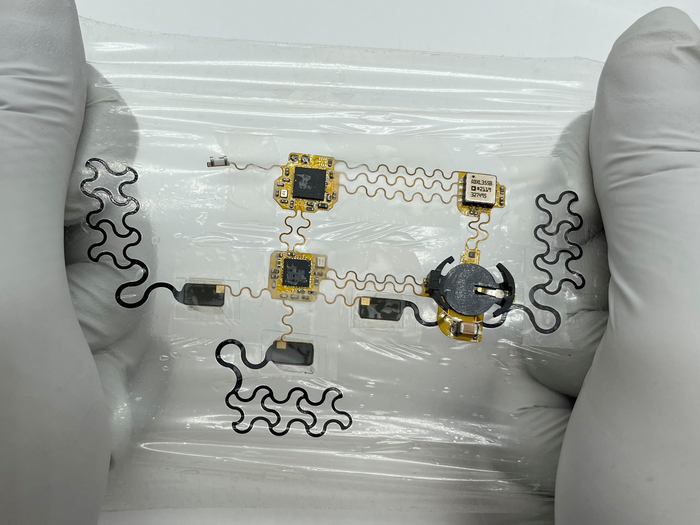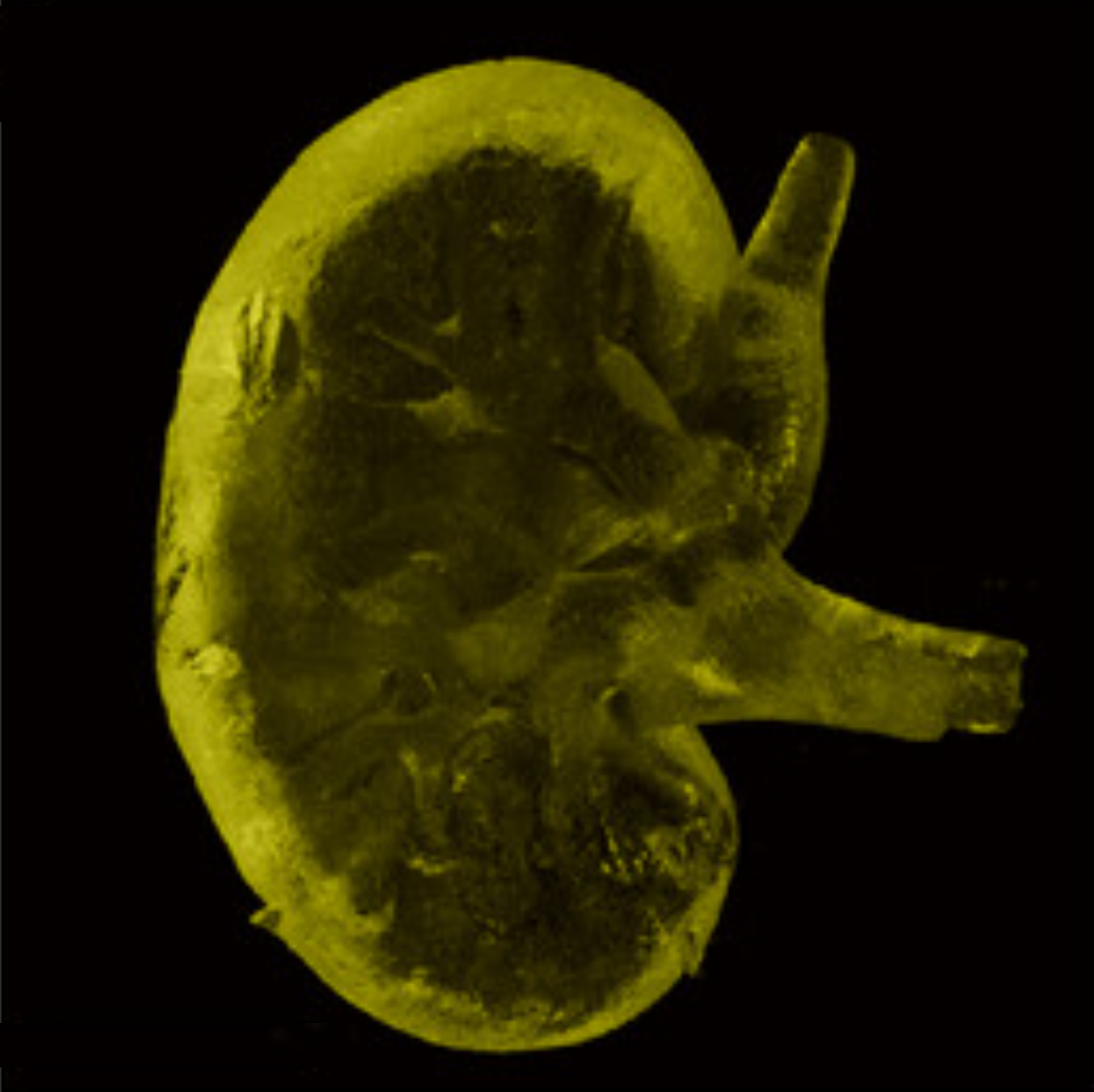Chest e-tattoo revolutionizes heart monitoring
About one in every four deaths is attributed to heart disease, which is equivalent to more than 650,000 deaths each year.

[May 1, 2023: Staff Writer, The Brighter Side of News]
The e-tattoo is stretchy to conform to the body. (CREDIT: The University of Texas at Austin)
Heart disease is the leading cause of death in the United States. According to the Centers for Disease Control and Prevention, about one in every four deaths is attributed to heart disease, which is equivalent to more than 650,000 deaths each year.
Early diagnosis and treatment are key to preventing heart disease and saving lives. However, most heart conditions are not very obvious, and the damage is often being done in the background without us even knowing it. But now, a team of researchers at The University of Texas at Austin has developed an innovative, flexible, wearable medical device that could provide a major boost in the fight against heart disease.
The device is an ultrathin, lightweight electronic tattoo, or e-tattoo, that attaches to the chest for continuous, mobile heart monitoring outside of a clinical setting. The e-tattoo includes two sensors that work together to provide a clear picture of heart health, giving clinicians a better chance to catch red flags for heart disease early.
The study, published in Advanced Electronic Materials, is a continuation of an earlier chest e-tattoo project. However, this new version is wireless and mobile, which is enabled by a series of small active circuits and sensors carefully arranged and linked by stretchable interconnections that conform to the chest via a medical dressing. The clear devices are far less intrusive than other monitoring systems and more comfortable for patients.
Related Stories:
The e-tattoo weighs only 2.5 grams and runs on a battery the size of a penny, which has a life of more than 40 hours and can easily be changed by the user. It provides two key heart measurements. The electrocardiogram, or ECG, is the electrical signal from the heart. The seismocardiogram, or SCG, is the acoustic signal from the heart that comes from the heart valves.
While ECG can be measured by mobile devices such as an Apple Watch, and the SCG can be monitored via stethoscope, there is no mobile solution that approximates a stethoscope or takes both measurements. By monitoring those two factors and synchronizing them, it is possible to measure cardiac time intervals, which are a major indicator of heart disease and other problems.
“Those two measurements, electrical and mechanical, together can provide a much more comprehensive and complete picture of what’s happening with the heart,” said Nanshu Lu, a professor in the Department of Aerospace and Engineering Mechanics and a lead author of the study. “There are many more heart characteristics that could be extracted out of the two synchronously measured signals in a noninvasive manner.”
Sarnab Bhattcharya and Nanshu Lu display the tattoo. (CREDIT: The University of Texas at Austin)
Currently, there isn’t a ready solution for long-term, comfortable monitoring outside of the clinical setting. Clinicians can run tests on patients when they visit, but they may not catch some heart issues because signs of disease are not present at that moment. This new e-tattoo technology provides continuous monitoring and could greatly benefit patients who are at risk for heart disease or those with pre-existing heart conditions.
The researchers have already tested the device on five healthy patients in their day-to-day environments, with a low error rate in measurements compared with currently available monitoring options. The next step involves further testing and validating the initial results and expanding to different types of patients.
Introduction to systolic time intervals (STIs), e-tattoo overview, and comparison to related work. Different heart events captured via different modalities and used to calculate pre-ejection period (PEP) and left ventricular ejection time (LVET). (CREDIT: Advanced Electronic Materials)
“This technology has the potential to revolutionize mobile health care and create a paradigm shift in patient care,” said Lu.
The researchers hope that the e-tattoo technology will become widely available in the near future, and that it will be used to improve the lives of millions of people around the world who suffer from heart disease and other health conditions.
The project team is Sarnab Bhattacharya and Philip Tan of the Chandra Department of Electrical and Computer Engineering; Alec Alden of the Department of Biomedical Engineering; Sangjun Kim of the Walker Department of Mechanical Engineering; Hirofumi Tanaka, Edward Coyle, Jieting Wang, and Taha Alhalimi of the College of Education’s Department of Kinesiology and Health Education; Mohammad Nikbakht and Omer Inan of the Georgia Institute of Technology’s School of Electrical and Computer Engineering; Pulin Wang of Austin company Stretch Med Inc.; and Animesh Tandon of Cleveland Clinic Children’s Pediatric Institute.
Note: Materials provided above by the The Brighter Side of News. Content may be edited for style and length.
Like these kind of feel good stories? Get the Brighter Side of News' newsletter.



